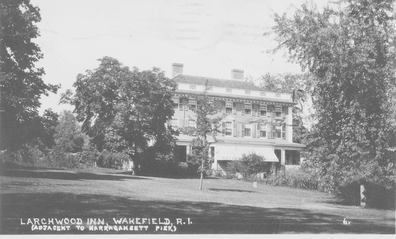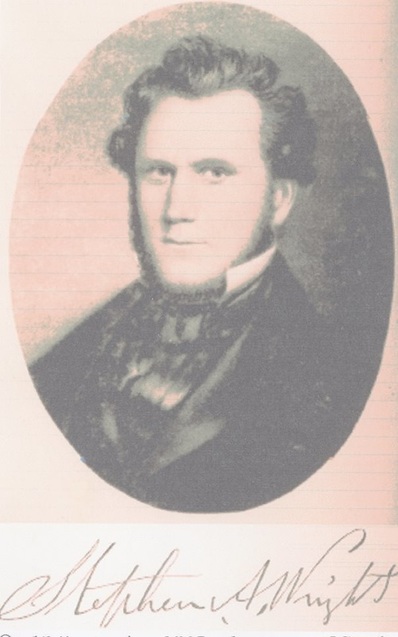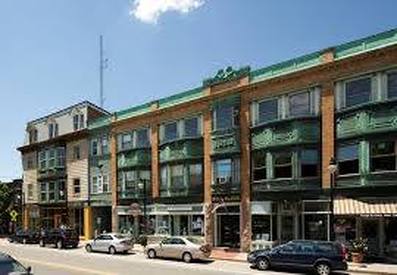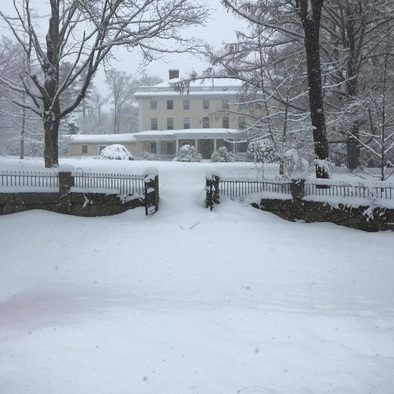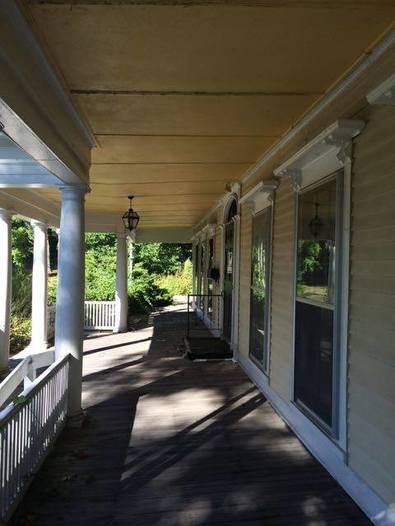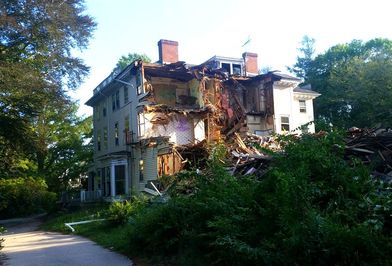Preserve Wakefield came about as a grassroots effort to save the Larchwood property from being developed in a way that we felt would damage an important gateway to the historically important village of Wakefield. We thought the building should be saved, but more importantly we wanted to preserve the nature of the neighborhood and the town to enhance its community cohesion and economic future. Below is a short history of the Larchwood and the common values that brought us together.
History of the LarchwoodThe Larches was built by James Robinson, textile mill owner, in 1831. In 1850 it was purchased by Stephen Wright, a blacksmith who built his fortune in Gold Rush California and returned to Rhode Island to establish a business empire by buying the Robinson mill, starting a bank, and becoming a state senator. After his death it was passed down through the Wright family, who eventually lost the house in the early 1900s. At that time George Phillips, a local retiree, bought it and turned it into the inn known as the Larchwood. It operated under this name with a few different owners until 2006, when it was closed.
During its life as an inn it became a gathering space much beloved by people all over South County, from Warwick to Westerly. It housed countless weddings and events, and Elks meetings, and family brunches and dinners. Eighty years of public access turned it into a community center of sorts. Architectural Significance
The Larchwood is, in South Kingstown, a rare high-visibility example of high style Federalist architecture. The influences of this architectural type originate in an Age of Reason reverence for Renaissance architectural principals (exemplified by Palladio) which are themselves based on classical Greek and Roman architecture outlined in Vitruvius's de Architectura. This tome was republished in English in 1692 and influenced many of the English manor houses of the 18th century. Symmetry, proportion, higherarchy of levels (largest windows on the first floor, smallest on the top story), and a sense of mass (implied by the carved wooden quoins made to look like stone) are all part of this aesthetic and are visible in the Larchwood's design. |
The Larchwood in Wakefield's Planning"Mitigating Harm": Historic & Cultural Resources
The Comprehensive Plan, a guiding document shaped by the people of South Kingstown with the local government, makes much of the importance of the Southwestern Gateway to the town, especially in the Natural and Cultural Element. This is because the Town acknowledges the importance of historic resources not only to its identity and sense of place, but also because tourism is such a major factor in Rhode Island's economy, and the charm brought by its historic places contributes in large part to its success. The Importance of the Southwestern Gateway
As you're traveling south on Rte 1 and exit into Wakefield, there is a small brown sign on the side of the road that reads "Welcome to Historic Wakefield". Upon exiting, you emerge onto Tower Hill Road, a mishmash of fast food restaurants, big box stores, and car dealerships. But you must drive nearly another two miles before you encounter the real historic Wakefield, the street listed on the National Register of Historic Places as one having cultural and architectural significance. Many travelers never get that far. It is only when you enter the town from farther down Rte 1, via the Pond Street or Post Road exits, that you discover the charming village of Wakefield. A "gateway" sets the tone for the village, and as it is now, historic Wakefield only has one gateway, which is the stately property where the Larchwood Inn stands. This gateway is vital to the survival of this historic strip, because to sandwich it in between gigantic, architecturally nondescript architecture would only serve to discourage the kind of visitor who would appreciate the quirky small-town businesses and long-time restaurants that make Wakefield what it is. Economic Importance: Highest & Best Use
So what kind of business should go in this location? There are many different options, but of these choices we prefer the one that best serves the function of 1) driving tourist traffic through historic Main Street and feeding the small businesses there; 2) setting the "tone" for the entrance to this historic Main Street and enhancing the charm of this walkable downtown; and 3) enhancing the economy by contributing it's own business revenues and associated taxes to the local economy. Ultimately all three of these work together not just to enhance the value of the property itself but also maximize the benefits to Main Street and the surrounding community while preserving the cultural history of Wakefield. Compatible uses could include a community and recreation center for SK, a cultural center such as a library or museum, office spaces or artists studios, and residences -- but the use that best serves all of the goals of a "highest and best use" happens to be that of a hospitality center, such as an inn and restaurant. What do you think should be done with the property? Tell us your thoughts here. |
